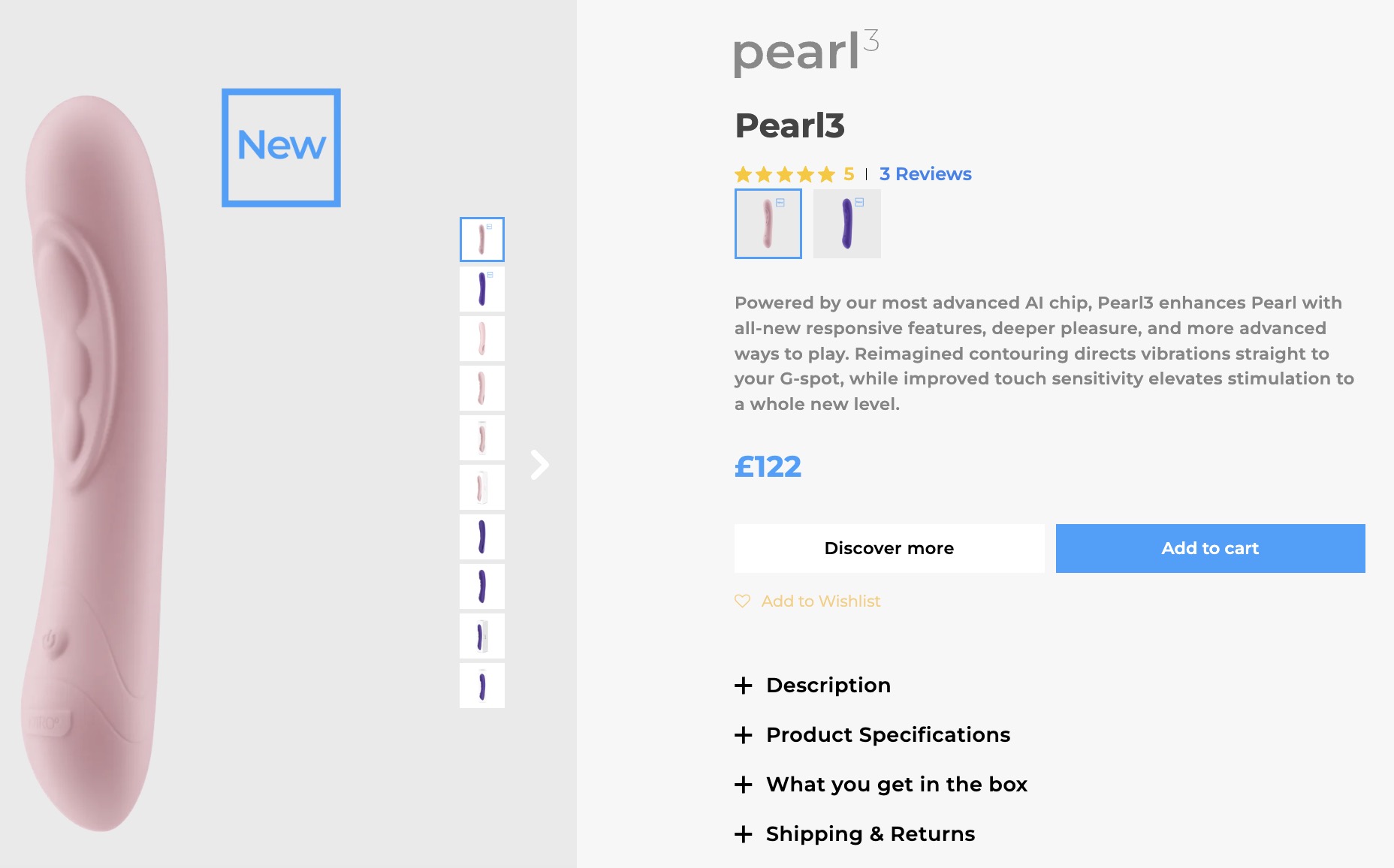Materials Needed
When creating your own personal massager, you will require several essential items to assure its effectiveness and safety:
- A motor, which generates the vibrations
- A battery pack or power source to supply energy to the motor
- Wiring or a connection mechanism to connect the components together
- A casing or cover to protect the device and provide comfort for users while in usage.
To ensure optimal results from your vibrator, it is equally important that you choose suitable materials with proper specifications.
Additionally, during assembly of the product, make sure to test all components before usage as faulty wiring can cause serious injuries.
Pro Tip: Always prioritize user safety when constructing adult products.
Get creative and make a vibrator design that screams ‘I DIYed this’ louder than your actual screams.
Vibrator Design
To design your perfect vibrator in “Vibrator Design” with “Choosing a Design” and “3D Printing a Design” as solutions. These sub-sections will guide you through the process of selecting a suitable design and bring it to life through 3D printing technology.
Choosing a Design
When it comes to designing a vibrator, there are various elements to consider. It goes beyond just picking a color and shape. Here are six points to keep in mind when selecting your design:
- Functionality: Determine the intended use of the vibrator, such as clitoral or g-spot stimulation.
- Material: Consider the type of material used for the toy, such as silicone or glass.
- Noise level: Decide on the noise level you are comfortable with when using your toy in public or private.
- Size and Shape: Determine if you prefer a slim or wider toy, and what shape would suit your needs best.
- Battery life: Consider how often you will be using the vibrator and select a design with an appropriate battery life.
- Price point: Set a budget before choosing your design.
When selecting your design, it’s essential to choose based on what works for you. Everyone has different preferences, so don’t be afraid to experiment until you find what suits your needs best. Remember that higher price doesn’t necessarily mean better quality.
One thing to consider is whether or not you want additional features such as remote controls or different vibration patterns. These add-ons can enhance your experience but may not be necessary for everyone.
Interestingly enough, according to science news website Live Science, vibrators were first designed in the late 1800s as medical devices to treat female hysteria! How times have changed.
Finally, a way to make your own personalized vibrator without having to awkwardly explain your preferences to a store clerk.
3D Printing a Design
The process of generating a 3D model is essential in creating a design that can be printed using a 3D printer. To fashion a customized vibrator, modeling software and 3D printing tools are utilized.
Here’s how to generate the perfect design:
- Choose the modeling software you’re most comfortable with.
- Create your desired ergonomic design.
- Test your design with materials such as silicone or other FDA-approved substances to ensure safety and compatibility during use.
- Use slicing software to translate your design file into a format that can be interpreted by your printer.
- Select print from your program to begin printing the model layer by layer with utmost precision.
Delve deeper into unconventional ideas when designing your vibrator, like adding textures or modifying dimensions. Mind-bending designs set you apart in the market and experimental features may give you an additional commercial edge.
Bring life to your sexual aids initiative. Act fast or risk missing out on the latest advancements and business opportunities available now in sexual wellness. Let creative thinking lead towards greater enjoyment in personal intimacy!
Let’s hope the wiring on this vibrator is better than my last electrician’s work.
Wiring the Vibrator
To wire your vibrator in “Wiring the Vibrator” with “Choosing the Right Battery” and “Wiring the Motor” as solutions, you need to have a clear understanding of how these components work together. In this section, we will explain these sub-sections briefly to help you create a functional vibrator that suits your needs.
Choosing the Right Battery
To select the ideal Energy Source
To ensure proper functioning, selecting the right energy source is crucial. The battery’s characteristics, such as voltage, current capability, and capacity, must be chosen carefully.
Factors like physical size, weight, cost and even temperature range can impact which kind of battery technology is suitable for your project. Here is a table that highlights some popular batteries that might work for your vibrating gadget.
| Battery type | Voltage (V) | Capacity (mAh) | Current capability (A) |
|---|---|---|---|
| Alkaline | 1.5V | 1700-2850 | 0.15A |
| Nickel Metal Hydride (NiMH) | 1.2V | 1000-2900 | 7A |
| Lithium | 3V | 150-12000 | up to 3.7 A |
It is crucial to calculate how much power during usage will be required when choosing a battery; this will help you determine the appropriate capacity.
Here are some recommendations when selecting batteries:
- Ensure to understand the capacity vs load or drain rate graph or data sheet before choosing a certain type/battery.
- Start with low-drain alkaline batteries; if they last long enough for your purposes, there isn’t any reason to use lithium-ion cells.
- Purchase from reputable suppliers as counterfeit batteries are often common in the market.
Let’s hope this motor doesn’t spark joy like Marie Kondo’s tidying tips.
Wiring the Motor
For the proper functionality of the device, the process of connecting the vibrator motor with the electrical wiring arrangements is crucial. Here we will discuss the seamless process of establishing electrical connections for setting up the vibration mechanism effectively.
- Start by identifying correct polarity, which can be identified by checking color codes or marking on motor wires.
- Use a soldering iron to connect motor wires to a corresponding battery holder or switch terminals. Take note that different connections may require different types and sizes of wire.
- If required, add a diode across the terminals to protect any sensitive components from electrical spikes caused by motor action.
- If possible, connect an audio amplifier or tone generator signal input to control or modulate motor speed or vibration frequency.
- Test Connections using a voltage meter and ensure every component is wired up correctly before turning power on.
- Once you are satisfied with testing results and functionality, insulate all exposed wiring with plastic sleeves to avoid any accidental contact while in operation
Lastly, It’s essential to note that incorrect wiring can lead to short circuits, excessive heating or fire hazards. Therefore safety precautions during wiring cannot be overemphasized.
A fact from IEEE Spectrum states that “In 1887 an eccentric inventor named Granville T. Woods patented 35 devices related to railroad communications and electric power distribution,” showcasing how innovation in electrical devices has come a long way over time.
When it comes to wiring a vibrator, the finishing touch is like frosting on a cake – it adds that extra spark and completes the package.
Adding Finishing Touches
To add the finishing touches to your homemade vibrator, you need to employ some techniques that can give it a professional look. With the “Adding Finishing Touches” section of the article “how to make your own vibrator” with “Silicon Mold, Painting the Vibrator” as a solution, you can learn how to give a sleek touch to your DIY vibrator by using these techniques.
Silicon Mold
For the process of giving a final touch to an object, there lies an important task called “Molding – Silicon”. This involves creating replicas of the original form with the help of a silicon mold.
Table for Silicon Mold:
| Material Used | Types Available | Purpose |
|---|---|---|
| Silicon | RTV, Liquid, Gum | Replication |
| Catalyst | Tin, Platinum | Hardening |
Apart from this, it is important to know that one can customize molds as per their requirements for specific designs and dimensions. The mold also aids in consistency in mass production.
To avoid any errors in production, always check for air bubbles and proper ventilation post hardening.
Recently, during my visit to a craft table exhibition, I saw an artist use a silicon mold technique to create intricate pieces of jewelry with absolute precision. It was fascinating to observe how a simple mold can transform the appearance of an object.
I guess if you’re going to vibrate, you might as well do it in style with a painted vibrator.
Painting the Vibrator
Using vivid colors or designs on the vibrator can add a unique personal touch, making it an interesting accessory. This can be done by painting the surface of the vibrator with non-toxic and body-safe paint. It is important to protect the button and motor areas to ensure they remain functional. Once the paint has dried, a clear coat can be added for extra protection.
When selecting paint, it is important to choose a type that will adhere well to the slick surface of the vibrator. Additionally, make sure that it is safe for human contact and proofed for sex toys. Before painting, it is recommended to thoroughly clean the vibrator with warm water and mild soap. Once finished, polish it with a soft cloth.
Take note to not over-saturate your chosen brush while applying paint in order to avoid drips or runs; one layer may require multiple coats so take patience in doing so.
For best results, try using non-permanent markers or gel pens instead of paint as they are easier to control while still offering more design freedom than standard permanent markers.
Pro tip: Experimenting is okay here – don’t worry about sticking to conventional styles or being perfect at first attempt!
I hope it’s not too much of a buzzkill.
Testing Your New Vibrator
Once you have made your vibrator and it is all set to go, it’s time to take it for a little test drive. For the best experience, it’s essential that you test your new vibrator before actually using it.
Follow these simple 3-Step Guide to test out your new vibrator:
- Turn on the vibrator and see if the vibration settings are according to your preference.
- Place the vibrator on a flat surface while running to check its stability.
- If the vibrator comes with attachments, try them out one by one and find out which attachment works best for you.
It’s important to note that every vibrator is unique in terms of its vibrations. So, even if you have used vibrators before, testing your new one will help you understand its unique features better.
Before wrapping up, don’t forget to clean your newly tested toy. Keep it in a dry and secure place until next use.
Don’t miss out on experiencing optimal pleasure by skipping this critical step of testing. Follow this guide and enjoy!
Frequently Asked Questions
1. Is it legal to make your own vibrator?
Yes, it is legal to make your own vibrator for personal use. However, selling homemade vibrators may be illegal depending on your local laws.
2. What materials are needed to make a vibrator?
You will need a small vibrating motor, batteries, wires, a switch, and a casing to hold everything together. You can purchase these materials at a hardware store or order online.
3. Can I use any type of motor for my vibrator?
No, it is important to use a motor specifically designed for vibration. You can find these motors at electronic stores or online retailers.
4. How do I assemble my homemade vibrator?
You will need to attach the motor to your casing, connect the wires to the switch, and install the batteries. For a more detailed guide, there are instructional videos and articles available online.
5. Is it safe to use a homemade vibrator?
If it is assembled correctly and made with safe materials, it is generally safe to use a homemade vibrator. However, it is important to thoroughly clean and sterilize the vibrator before use.
6. Can I customize my homemade vibrator?
Yes, one advantage of making your own vibrator is the ability to customize the design to meet your specific preferences.


